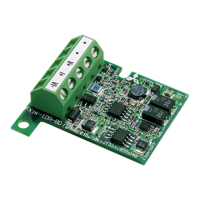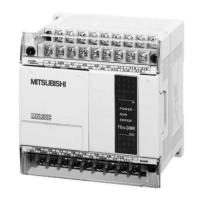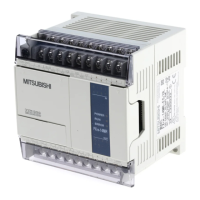vi
3. STL Programming .................................................................................3-1
3.1 What is STL, SFC And IEC1131 Part 3?.............................................................3-1
3.2 How STL Operates ..............................................................................................3-2
3.2.1 Each step is a program .............................................................................................3-2
3.3 How To Start And End An STL Program.............................................................3-3
3.3.1 Embedded STL programs .........................................................................................3-3
3.3.2 Activating new states.................................................................................................3-3
3.3.3 Terminating an STL Program ....................................................................................3-4
3.4 Moving Between STL Steps ................................................................................ 3-5
3.4.1 Using SET to drive an STL coil ................................................................................. 3-5
3.4.2 Using OUT to drive an STL coil................................................................................. 3-6
3.5 Rules and Techniques For STL programs...........................................................3-7
3.5.1 Basic Notes On The Behavior Of STL programs.......................................................3-7
3.5.2 Single Signal Step Control ........................................................................................3-9
3.6 Restrictions Of Some Instructions When Used With STL..................................3-10
3.7 Using STL To Select The Most Appropriate Program .......................................3-11
3.8 Using STL To Activate Multiple FlowsSimultaneously.......................................3-12
3.9 General Rules For Successful STL Branching..................................................3-14
3.10 General Precautions When UsingFX-PCS/AT-EE Software .............................3-15
3.11 Programming Examples ....................................................................................3-16
3.11.1 A Simple STL Flow.................................................................................................. 3-16
3.11.2 A Selective Branch/ First State Merge Example Program.......................................3-18
3.12 Advanced STL Use............................................................................................3-20
4. Devices in Detail....................................................................................4-1
4.1 Inputs...................................................................................................................4-1
4.2 Outputs ................................................................................................................4-2
4.3 Auxiliary Relays...................................................................................................4-3
4.3.1 General Stable State Auxiliary Relays ......................................................................4-3
4.3.2 Battery Backed/ Latched Auxiliary Relays.................................................................4-4
4.3.3 Special Diagnostic Auxiliary Relays ..........................................................................4-5
4.3.4 Special Single Operation Pulse Relays.....................................................................4-5
4.4 State Relays ........................................................................................................4-6
4.4.1 General Stable State - State Relays .........................................................................4-6
4.4.2 Battery Backed/ Latched State Relays......................................................................4-7
4.4.3 STL Step Relays .......................................................................................................4-8
4.4.4 Annunciator Flags .....................................................................................................4-9
4.5 Pointers .............................................................................................................4-10
4.6 Interrupt Pointers...............................................................................................4-11
4.6.1 Input Interrupts ........................................................................................................4-12
4.6.2 Timer Interrupts .......................................................................................................4-12
4.6.3 Disabling Individual Interrupts .................................................................................4-13
4.6.4 Counter Interrupts ...................................................................................................4-13
4.7 Constant K.........................................................................................................4-14
4.8 Constant H.........................................................................................................4-14
4.9 Timers................................................................................................................4-15
4.9.1 General timer operation...........................................................................................4-16
4.9.2 Selectable Timers....................................................................................................4-16
4.9.3 Retentive Timers .....................................................................................................4-17
4.9.4 Timers Used in Interrupt and ‘CALL’ Subroutines ...................................................4-18
4.9.5 Timer Accuracy .......................................................................................................4-18
4.10 Counters............................................................................................................4-19
4.10.1 General/ Latched 16bit UP Counters ......................................................................4-20
4.10.2 General/ Latched 32bit Bi-directional Counters.......................................................4-21

